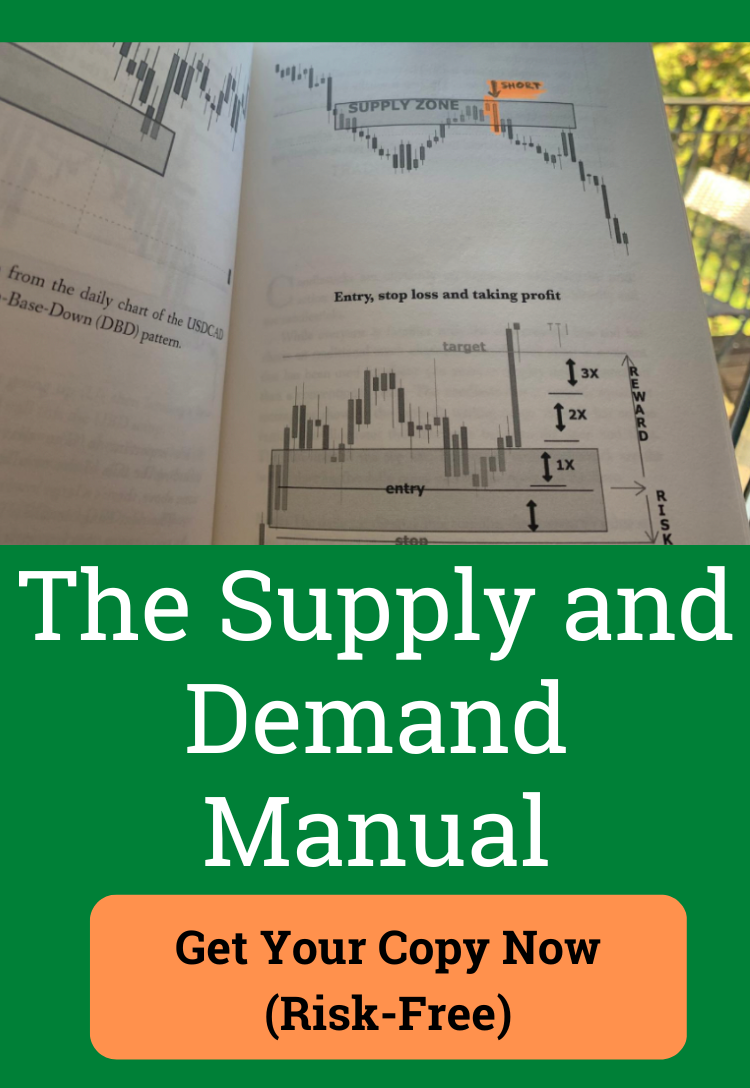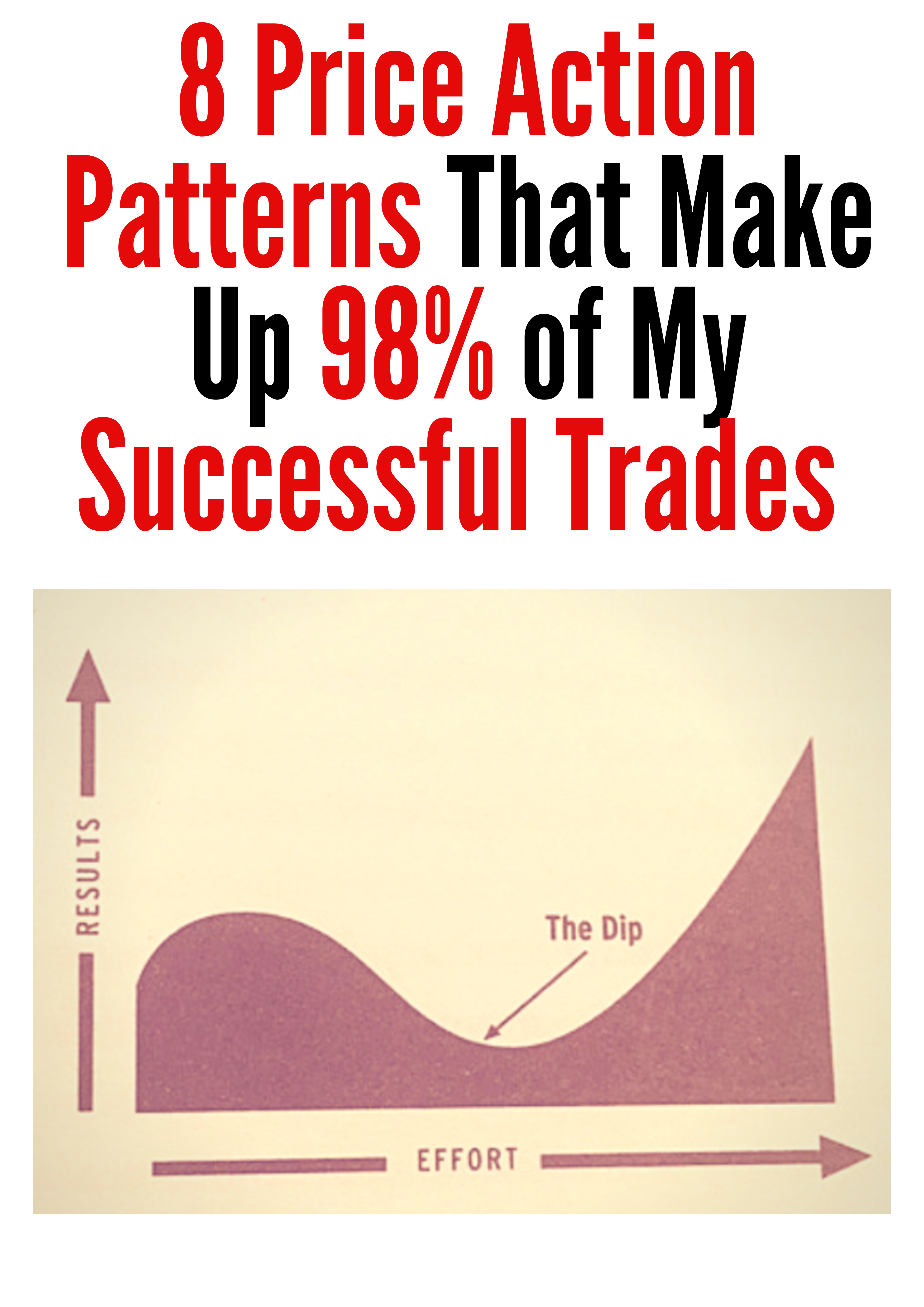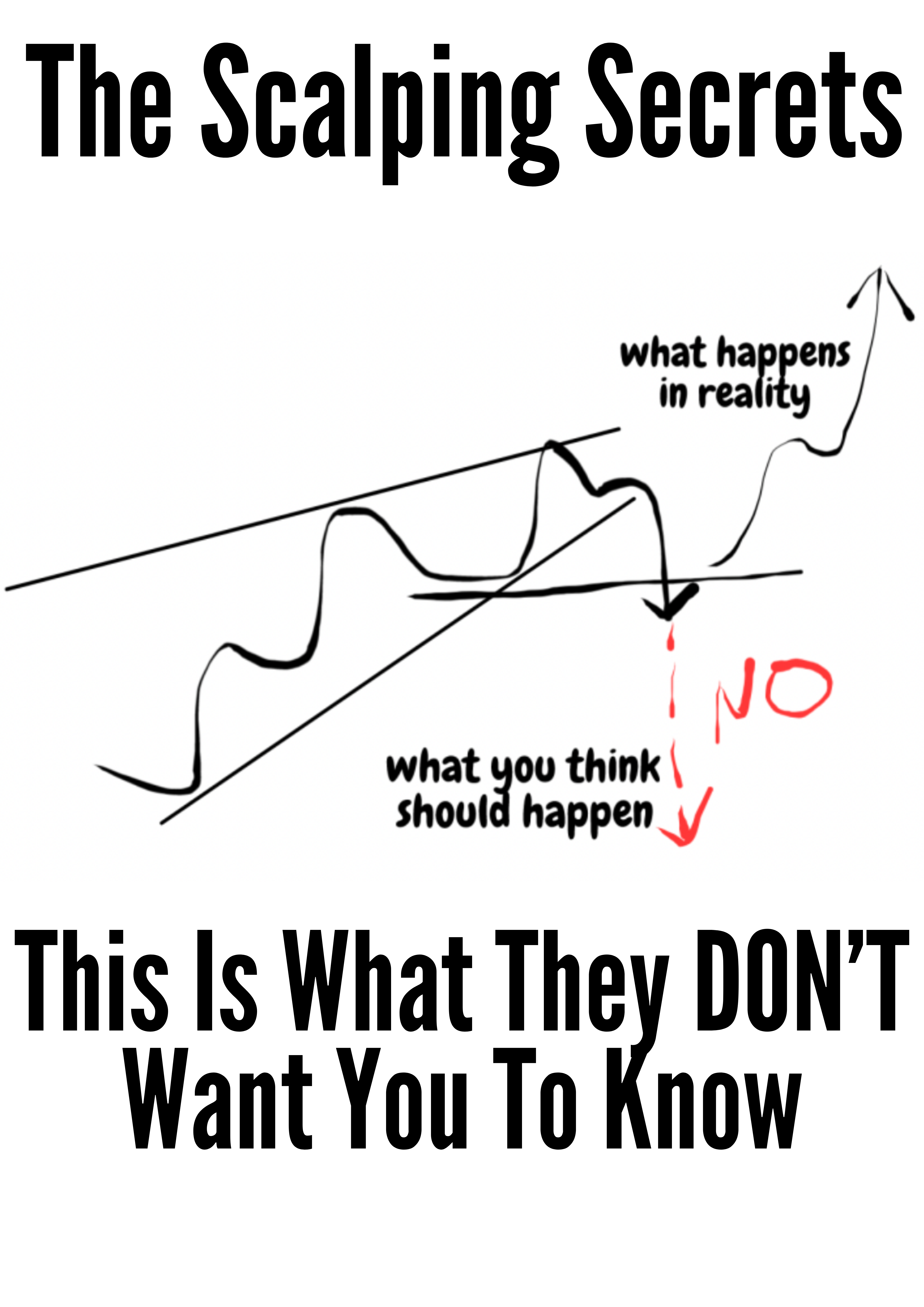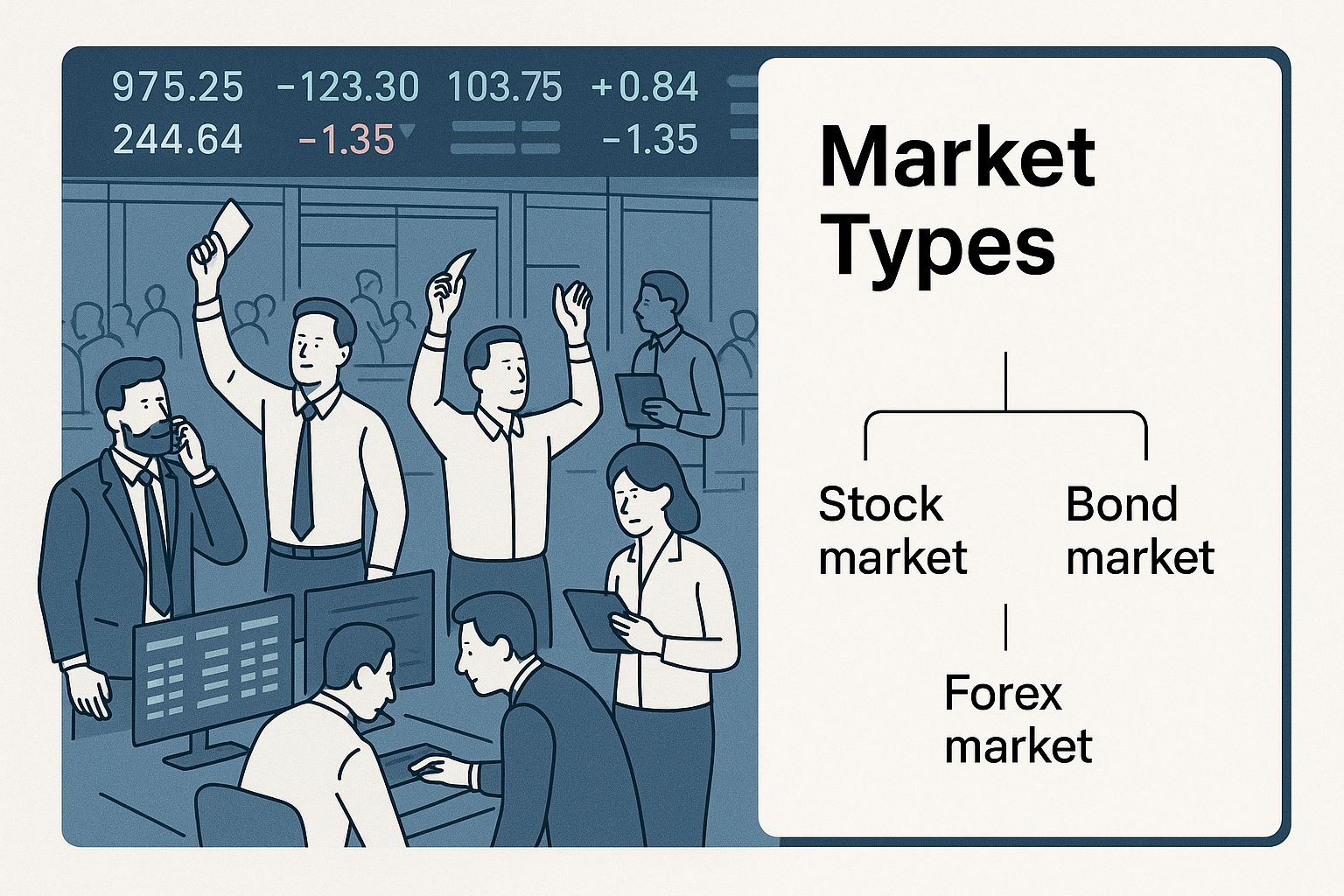Understanding Market Structure: Your Complete Trading Guide
What Market Structure Really Means for Traders
Forget the complicated academic definitions for a moment. For a price-action trader, understanding market structure is like learning to read the market's body language. It's the simple, repeating fingerprint that price leaves on your charts. Every swing high and swing low tells a story, revealing what buyers and sellers are doing in real-time.
Successful traders don't see market structure as a rigid set of rules, but as a practical guide to the flow of money. It's about seeing the narrative behind the price, not just the lines.
This skill is more accessible now than ever. In today's markets, where electronic trades are expected to account for the vast majority of transactions by 2025, the underlying logic of price has become much clearer. The move away from traditional trading floors has made the market more transparent, allowing individual traders to see the same structural patterns that were once the domain of large institutions.
The Story Behind the Swings
At its heart, market structure answers one critical question: who is in control? Are buyers pushing prices to new highs with confidence, or are sellers overpowering them and driving the market down?
Think of it like walking up or down a flight of stairs:
- Uptrends (Bullish Structure): This is like walking up a staircase. Each step you take upwards is a higher high. You might pause on a landing—a higher low—but that landing is still higher than the one before it. This pattern shows consistent buying strength and confidence.
- Downtrends (Bearish Structure): Now, picture walking down those same stairs. Each step down creates a lower low. You might step back up to a landing—a lower high—but it's lower than the previous landing. This movement signals persistent selling pressure.
To better understand how these dynamics play out in different environments, it's helpful to compare the structure of traditional floor trading with modern electronic markets.
Traditional vs. Electronic Market Structure Components
The table below breaks down how key elements of market structure have changed with the shift from physical trading floors to digital platforms.
| Market Element | Traditional Structure | Electronic Structure | Impact on Traders |
|---|---|---|---|
| Price Discovery | Relied on "open outcry" and floor specialists. Information flow was slower and less direct for off-floor traders. | Driven by algorithms and order books. Price information is instant and globally accessible. | Retail traders now have direct access to real-time price data, leveling the playing field. |
| Order Flow | Orders were communicated verbally or through hand signals, creating a "pit" of activity. | Orders are processed electronically through centralized servers, creating a visible, digital order book. | Traders can analyze order flow data (Level 2) to see buy/sell pressure with greater clarity. |
| Key Levels | Often based on major psychological numbers or areas of high physical trading activity. | Defined by algorithmic execution, previous highs/lows, and clusters of stop/limit orders visible in data. | Structural levels are more precise and data-driven, allowing for more accurate analysis. |
| Transparency | Limited. Only floor traders had a full view of the immediate action and sentiment. | High. All market participants see the same price feed and chart data simultaneously. | Increased transparency makes chart patterns and market structure more reliable for analysis. |
This comparison shows that while the core principles of supply and demand remain, electronic markets make the resulting structure much more visible and analyzable for everyone.
From Theory to Practical Application
When you start seeing the market through this structural lens, you stop viewing charts as random squiggles. Instead, you begin to see a clear narrative of control unfolding. This foundational skill is what separates traders who seem to anticipate market moves from those who are constantly surprised by them. The secret isn't a magic indicator; it's a deep, practical understanding of market structure.
By learning to read these patterns, you can pinpoint the key levels where control is most likely to shift. These are the zones where smart money tends to act, and where the most favorable trading opportunities often emerge. Recognizing a change in structure—like a break in the "staircase" pattern—is one of the most powerful signals a trader can have. You can see more visual examples in our guide on using a market structure chart.
Essential Building Blocks Every Trader Needs
To start understanding market structure, you first need to see the market's "blueprint." In trading, this blueprint is built from a simple sequence of peaks and valleys—also known as swing highs and swing lows. These points show us who is in control of the price: the buyers or the sellers. Learning to read these fundamental patterns is your first step toward interpreting price action like a seasoned trader.
The Upward Staircase: Bullish Structure
Think of an uptrend, or bullish market structure, as climbing a set of stairs. The price pushes up to create a new peak (higher high or HH), then takes a breather by pulling back to a step (higher low or HL) that is still above the previous one. This repeating pattern of higher highs and higher lows is a clear sign of consistent buying pressure.
- Higher High (HH): This happens when buyers have enough momentum to push the price past its last peak. It signals strength and confidence in the market.
- Higher Low (HL): After reaching a new high, some traders take profits, causing a small dip. However, new buyers step in at a higher level than before, defending this new ground and confirming the uptrend is healthy.
When you see this consistent one-two punch of a new high followed by a higher low, it’s a strong indication that buyers are running the show.
The Downward Escalator: Bearish Structure
On the flip side, a downtrend, or bearish market structure, acts more like a descending escalator. The price falls to a new bottom (lower low or LL) and then rallies briefly to a peak (lower high or LH) that doesn't quite reach the previous high. This pattern shows that sellers are overpowering any buying attempts.
- Lower Low (LL): This occurs when sellers are strong enough to break the price below its prior support level, demonstrating their control.
- Lower High (LH): Buyers try to rally the price, but they run out of steam quickly. Sellers re-enter and push the price down from a lower peak, confirming the downward momentum.
A continuous series of lower lows and lower highs tells you that the path of least resistance is to the downside. The infographic below shows how these trends are just one part of the market's behavior.
This visual makes it clear that trends are just one of several states a market can be in, and each state requires a different strategy. The most important skill is to identify the current market state—whether it’s bullish, bearish, or moving sideways. Making a trade without this context is like setting sail without checking the weather.
How Modern Markets Create Your Trading Edge
Today’s markets bear little resemblance to the chaotic trading pits of the past. The secret to gaining an advantage is to understand market structure for what it is now: a system largely driven by algorithms, high-frequency trading, and massive institutional orders. This shift to a digital marketplace gives you a powerful tool to improve your trading.
It's a common misunderstanding that you need coding skills to interpret this new environment. The truth is, you just have to learn how to recognize the behavioral patterns that emerge when computer programs and human traders interact.
The Footprints of Smart Money
Imagine the modern market as a digital battlefield. Large institutional orders aren't just placed with a single click. Instead, they are executed by complex algorithms built to buy or sell huge positions without causing a major price shock. These algorithms leave behind subtle but readable clues on your charts.
Have you ever wondered why certain price levels act like an unbreakable wall while others are easily breached? It’s often because algorithms are programmed to defend or attack those exact points. This is where understanding market structure becomes a tangible skill. By spotting the digital footprints of this "smart money," you can tell the difference between a real trend and a short-lived, algorithm-induced fakeout.
Algorithms and Price Action
The digital nature of modern markets results in predictable patterns you can learn to use. In fact, automated and algorithmic trading now account for over 70% of equity market volume in major markets. These systems change how prices are set and orders are filled, creating much clearer structural levels.
This algorithmic dominance makes learning how to trade price action more critical than ever. The patterns you observe—the sharp rejections from a key level, the slow grinds higher, and the sudden breakouts—are often the direct result of pre-programmed computer behavior. By understanding these dynamics, you'll know when to confidently jump on a breakout and when to fade it, giving you a real advantage over traders still looking at charts like it's 1995.
Decoding The Market's Secret Language
Every tick on your price chart tells a story. It's a constant conversation between buyers and sellers, a tug-of-war for control. Understanding market structure is like learning to speak this language fluently. It lets you translate the market’s narrative in real-time, helping you tell the difference between a random price flicker and a major plot twist that could signal a new trend.
Learning to read these signals takes you beyond just watching prices go up and down. You start to understand the why behind the moves. Through careful chart analysis, you can spot when a trend is running out of steam, gathering new strength, or getting ready to reverse course entirely. This isn't about having a crystal ball; it's about identifying high-probability setups based on the collective actions of everyone in the market.
Reading Between The Lines: Accumulation and Distribution
Two of the most revealing "chapters" in the market's story are accumulation and distribution. These are the quiet periods when "smart money"—large institutions and professional traders—are secretly building or offloading their positions before a big move.
- Accumulation: Imagine a dam quietly filling up before it bursts. That's accumulation. It often looks like a boring, sideways market. While many traders lose interest, large players are methodically buying up an asset, or "accumulating" it, without sending the price soaring. Spotting this phase can put you ahead of the coming flood.
- Distribution: This is the opposite scenario. After a powerful uptrend, the big players start quietly selling their positions to the wave of enthusiastic retail buyers. This also frequently appears as a ranging market near a peak. Recognizing distribution is your cue to exit before the party ends and prices turn south.
Volume: The Market's Tell-Tale Heart
If price tells you what is happening, volume tells you how much conviction is behind the move. Think of it as the emotional tone of the market's conversation. A breakout that occurs on high volume is far more believable than one that happens on a whisper of low volume.
This context is crucial. The sheer scale of modern financial markets highlights why. For example, global trade hit an incredible $33 trillion in 2024, showing how deeply interconnected capital flows are. You can learn more about these global market insights on McKinsey.com. This dynamic between massive global capital and local price action is exactly why professional traders lean so heavily on structural analysis. It helps them time their entries and exits with greater precision, setting them apart from the crowd.
Your Step-By-Step Market Structure Playbook
Knowing the theory is one thing, but consistently applying it in the heat of a live market is where the real power lies. Moving from simply spotting patterns to actively trading them requires a clear, repeatable process. Think of this playbook as your guide to making a deep understanding of market structure a core part of your daily trading routine, turning abstract ideas into confident decisions.
Step 1: Identify The Primary Trend
Before you do anything else, zoom out. The first step is always to get the bigger picture. Look at a higher timeframe, like the daily or 4-hour chart, to determine the market's main direction. Is the price creating a clear series of higher highs and higher lows (an uptrend)? Or is it making lower highs and lower lows (a downtrend)?
This top-down analysis gives you crucial context. It’s like checking the current before you start swimming; you want to go with it, not against it. Trading in harmony with the primary trend is one of the simplest ways to stack the odds in your favor.
Step 2: Pinpoint Key Structural Levels
Once you know the primary trend, it's time to mark the most important swing points on your chart. These aren't just random peaks and valleys; they are the battlegrounds where control has previously shifted between buyers and sellers.
- Swing Highs: These are your ceilings, acting as potential resistance. In an uptrend, a decisive move above a key swing high is known as a Break of Structure (BOS) and confirms the trend is likely to continue.
- Swing Lows: These are your floors, acting as potential support. In an uptrend, the most recent significant higher low is your "line in the sand." If the price breaks below it, the uptrend could be in trouble.
Take a look at the chart below. It shows how these structural points play out in a real-world scenario.
You can see how the price respects the previous swing points. New highs are formed only after breaking past the prior ones, which is a textbook confirmation of a bullish structure.
Step 3: Wait For Confirmation, Then Execute
Patience is a trader's most valuable skill. Instead of jumping into a trade the moment price touches a key level, wait for it to give you a signal that your analysis is correct.
For example, if you're looking to go long in an uptrend, you might wait for the price to pull back to a support level (like a previous swing high). Then, watch for signs of rejection, such as a strong bullish candlestick pattern. This is your confirmation.
Your stop loss should then be placed logically below the structural low that would prove your trade idea wrong. This disciplined method—combining trend, levels, and confirmation—is the foundation of any solid trading strategy built on a true understanding of market structure.
Global Forces That Shape Market Structure
To truly master market structure, you have to zoom out from the individual chart. Price action doesn't exist in a bubble; it's the direct result of powerful global forces steering entire economies. Think of macroeconomic trends, central bank policies, and geopolitical events as massive ocean currents. They can shift the market's direction entirely, shaping the very patterns you trade.
When you understand how these larger forces work, you add a critical layer of context to your analysis. This awareness helps you anticipate when your familiar structural patterns are likely to hold firm and when they might be about to break.
Economic Cycles and Price Action
Imagine the economy moves in seasons. An economic "summer," with strong growth and low interest rates, creates a fertile ground for bullish trends. In this environment, classic uptrends featuring a series of higher highs and higher lows tend to be much more reliable and last longer.
On the other hand, an economic "winter," or recession, brings fear and uncertainty. This climate makes bearish structures more dominant as selling pressure takes control of the market. These macroeconomic shifts are what give weight to key price levels.
For instance, if you practice supply and demand zone trading, you'll find that these zones become far more significant when they align with the broader economic mood. A demand zone is much more likely to trigger a powerful rally when economic optimism is high.
These global dynamics are particularly visible in emerging markets, where economies can be more sensitive to external pressures. For example, recent global economic projections from the IMF indicate that emerging market growth is expected to slow from 4.1% in 2024 to 3.4% in 2025. This slowdown is driven by factors like geopolitical tensions, trade disputes, and stubborn inflation, all of which directly impact chart patterns.
The table below breaks down how different economic conditions can influence market structure and your trading approach.
| Economic Condition | Market Structure Impact | Trading Implications | Risk Considerations |
|---|---|---|---|
| Economic Expansion | Strong, prolonged uptrends; higher highs and higher lows are common. | Favorable for long positions and trend-following strategies. Demand zones are more reliable. | Overextended trends can lead to sharp corrections. Complacency can set in. |
| Recessionary Period | Dominant, persistent downtrends; lower highs and lower lows are expected. | Favorable for short positions. Supply zones tend to hold firmly. | High volatility and "whipsaw" price action can stop out positions prematurely. |
| High Inflation | Increased volatility and uncertainty. Potential for choppy or range-bound markets. | Scalping and short-term strategies may be more effective. Focus on clear breaks of structure. | Unexpected central bank actions can cause sudden, sharp market reversals. |
| Geopolitical Instability | Sudden spikes in volatility; potential for sharp trend reversals and break of structure. | Trade smaller position sizes. Wait for volatility to subside and a new structure to form. | News-driven moves are unpredictable and can invalidate technical setups instantly. |
This table shows that no single trading strategy works in all conditions. The key is to match your approach to the current economic "season."
Geopolitical Events as Catalysts
Beyond predictable economic data, geopolitical events are like sudden earthquakes for market structure. A surprising election outcome, the escalation of a trade war, or a new international conflict can instantly shatter a perfectly defined trend.
These events inject a surge of volatility into the markets, often causing a sharp Break of Structure (BOS) or a complete reversal of the prevailing trend.
A skilled trader doesn’t just read charts; they keep an eye on the world stage. They know that a headline from across the globe could spark the next big move on their screen. This connection between world events and price action is the final piece of the puzzle, giving you the context to trade with more confidence, especially when markets are on edge.
Your Market Structure Mastery Action Plan
Success in understanding market structure doesn't happen overnight or from a few random study sessions. Real confidence comes from consistent, focused practice. It's about building daily habits and having a clear system to track your progress. Think of this as your personal training program to help you read the market's story with skill and accuracy.
This roadmap is designed to build the "muscle memory" you need for sharp structural analysis. It focuses on practical routines that will speed up your learning curve.
Your Daily Practice Regimen
To truly sharpen your skills, you need to dedicate time each day to looking at charts. The goal here isn't to find trades, but to train your eyes to see the structure clearly.
- Morning Analysis (15 minutes): Before the market gets going, pull up your main watchlist. On a fresh chart, mark the important structural points from the day before—the swing highs and swing lows. Say the current market structure (bullish, bearish, or ranging) out loud. This simple act forces you to commit to an analysis and builds clarity.
- End-of-Day Review (15 minutes): After the market closes, go back to those same charts. How did the price react to the levels you marked? Did the structure hold, or did a Break of Structure (BOS) happen? This daily feedback is where the real learning kicks in.
Your Weekly Refinement Process
Set aside one session each week for a deeper dive. This will help you connect the daily observations, see the bigger picture, and spot any bad habits you might be forming.
- Chart Journaling: Review your trades from the week. For every trade, take a screenshot of the setup and write down why you entered based on market structure. Did your trade align with the higher timeframe trend? Did you wait for a confirmation signal? This process makes your thinking tangible and helps you identify recurring mistakes.
- "What If" Scenarios: Choose one chart from the past week and replay the price action in your mind. Ask critical questions like, "What if I had waited for a deeper pullback before entering?" or "What if I had based my trade on the 4-hour structure instead of the 15-minute?" This exercise builds the strategic flexibility you need to adapt to changing market conditions.
By committing to this action plan, you shift from being a passive learner to an active practitioner. This disciplined approach is what separates consistently profitable traders from everyone else.
Ready to turn this plan into consistent results? At Colibri Trader, we provide the action-based programs and mentorship to help you master price action. Start your journey from analysis to consistent profitability today.








